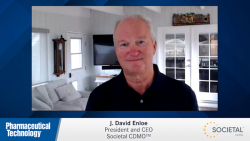
OR WAIT null SECS
- About Us
- Advertise
- Contact Us
- Editorial Info
- Editorial Advisory Board
- Do Not Sell My Personal Information
- Privacy Policy
- Terms and Conditions
© 2025 MJH Life Sciences™ , Pharmaceutical Technology - Pharma News and Development Insights. All rights reserved.
Counterfeit Woes in the West
Last week, counterfeits of the anti-cancer drug Avastin were discovered in the US and this week fake pharmaceuticals continue to occupy headlines.
Last week, counterfeits of the anti-cancer drug Avastin were discovered in the US and this week fake pharmaceuticals continue to occupy headlines.
Investigations are continuing in the Avastin case. Although neither Roche nor the FDA have released new statements since last week, several third-party media reports say that investigators have traced the source of the counterfeits back through a path from the US, to the UK, to Denmark, Switzerland and finally to a company called SAWA in Cairo (Egypt). However, it seems as if SAWA may not actually exist. Or if it does, it’s certainly not a legal company.
According to Reuters, a spokesman for the Egyptian health ministry said that official checks had found that SAWA was not registered with the ministry in any capacity, which makes it illegal for the company to deal in pharmaceuticals.
And it’s not just the US that is dealing with counterfeits this week; in the UK, authorities on Wednesday seized a large quantity of fake sex drugs worth an estimated £140000. Two men have been arrested and the UK’s Medicines and Healthcare products Regulatory Agency added that the haul may have included around 6000 counterfeit copies of Eli Lilly’s Cialis drug, although this needs to be confirmed by testing.
Also this week, an article was published in the International Journal of Clinical Practice that warned of the increasing numbers of fake drugs entering legitimate supply chains. According to the article, global sales of counterfeit medicines are worth more than $75 billion, and have doubled in just five years between 2005 and 2010.
Counterfeit drugs are traditionally more prevalent in developing countries where supply chain security and enforcement systems are weaker. However, the fact that counterfeits are increasingly entering the more heavily regulated supply chains of the west goes a long way to saying that counterfeiters are getting smarter – and more determined to break into high-value markets, such as anticancer drugs.
In the UK, for instance, there have been nine recalls of counterfeit medicines in the past three years. In 2011, an enormous £4.7-million counterfeit pharmaceutical scam was also uncovered in the UK. Peter Gillespie was jailed in April 2011 for plotting to bring two million counterfeit drugs worth £4.7 million from China to the UK.
Although counterfeiters are becoming more aggressive, regulators are also stepping up the fight. In Europe, the Falsified Medicines Directive (due to come into force in 2013) will increase controls across the EU. Companies will be required to add safety features to packaging and online pharmacies will also be targeted. Other initiatives are also taking place. For instance, the European Federation of Pharmaceutical Industries and Associations (EFPIA) has been working with other groups and organisations to identify options for establishing effective solutions to verify medicines in Europe.
The US is also making efforts to fight counterfeits. Last year, the FDA in a joint effort with several other government agencies and departments issued a report recommending a number of items to prevent counterfeits from entering the US. In January this year, the US Pharmacopeial Convention also proposed a set of best practices to ensure that medicines could be traced back to their original manufacturer.
In the March issue of Pharmaceutical Technology Europe, you’ll be able to read more about counterfeits. We’ll be publishing two articles examining the growing incident of counterfeits in Europe and the US, respectively.


